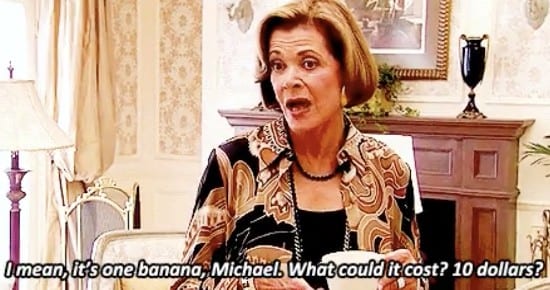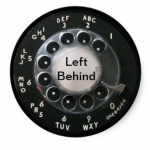The previous post was a bit of a bitter joke. I’m not seriously advocating any of those ideas as the best ways of addressing America’s jobs crisis (although we should be teaching music and art and it is probably long past time to try something other than the isolation strategy that has failed to work with Cuba for five decades now).
But I am dead serious when I say that it’s time — right now — to be doing everything possible to address that jobs crisis. No tool should go unused. No attempt should be left untried. No method should be off the table. There are hundreds of things we could and should try before also resorting to rebuilding the Great Pyramid in Vegas (or Indiana), but with 9-percent unemployment for the foreseeable future, I’m not going to rule out even something as absurd and intentionally ludicrous as the Pyramid Project.
“But that would just be make-work,” critics protest.
They say that as though that would be a bad thing. When the No. 1 problem is that there’s not enough work to go around, what’s wrong with making some? Right now there’s not enough of the stuff. High time to make more, I’d say.
The classic example of make-work is paying people to dig holes and then fill them back in. Even that would be preferable to the current situation, which involves not paying 13.9 million people and forcing them to sit idle on the sidelines. Digging holes and refilling them would be pointless and Sisyphean, but it would be better to be Sisyphus drawing a regular paycheck than to be one of our millions of long-term jobless whose unemployment insurance benefits have run out.
Still, I’m not advocating hole-digging and hole-filling because that would only address half of the problem of our current jobs crisis. It would meet the desperate need for work of those 13.9 million Americans with no source of earned income, but it would not address the damage being done to our economy and our society of losing the productive contributions of nearly 14 million people.
The current crisis — to again borrow one of my favorite phrases from Wendell Berry — is a solution neatly divided into two problems. We have people who desperately need work to do. And we have work that desperately needs doing.
It takes years of specialized training to reach the point at which one doesn’t see the obvious “therefore” — or, even worse, the point at which one doesn’t view that obvious next step as desirable or possible. It takes the sort of training in which one learns to argue for the sanctity of efficient markets by insisting that the massively inefficient failure of those same markets is the best of all possible worlds. The sort of training that allows one to pretend to think that idling 14 million productive people while simultaneously neglecting urgently necessary tasks is the definition of “efficiency.” The sort of training that suggests we humans are powerless cogs with no agency who must accept the destiny decreed by the mystical and unalterable Market God, obscenely rechristening enslavement to that cruel God as “freedom.”
No, thank you. I much prefer the sort of freedom that means we are free to act, free to do that which is necessary before calamity forces the Market God to recognize it as such. Free to reject the idea that 13.9 million of us are just losers for whom no work, no income, no purpose can be found. Free to fix crumbling bridges, to repair obsolete pipelines, to upgrade an aging 20th-century power grid and plan ahead for the clean energy needs of our children and grandchildren.
There is work to be done — a lot of it. Anyone who says otherwise is blind. Those wholly lacking vision cannot be relied upon to lead. Without vision, the people perish. We are not facing a crisis, as some have suggested, of “structural” unemployment — the sort of thing J.K. Galbraith imagined in The Affluent Society, wherein the jobless are left idle because, unlike in agrarian times, we do not need their productivity. Their work is needed just as much as they need work to do.
So we don’t need to worry about make-work. We don’t have to worry about hiring people to dig hole and refill them — we have way too many holes already that urgently need filling.
And those holes are not static. They’re getting bigger every day. Entropy never misses a day of work. The interest that is piling up on our neglected and deferred maintenance is compounding faster and more expensively than any merely financial debt.
Ah, but what about the debt and the deficit? What about the argument that we can’t afford to put people back to work because our government is already spending more than it’s taking in?
This should not be confusing. It is not complicated. Employed people earn incomes and pay taxes. Unemployed people do not earn incomes and therefore do not pay taxes, but they do constitute government expenses in the forms of unemployment assistance and other emergency benefits.
Turning an unemployed person into an employed person is the most efficient way to reduce a budget deficit — it replaces an expense with a source of revenue. Allowing employed people to become unemployed people is the most efficient way to create a budget deficit — it replaces a source of revenue with an expense.
Saying we “can’t afford” to put people back to work because of budget deficits is like trying to save money by quitting your job to cut down on the cost of commuting. It’s exactly that counterproductive and exactly that destructive. It hurts people. It hurts some more directly than others, but it winds up hurting everyone.
We have people who desperately need work to do. And we have work that desperately needs doing. I wrote about some of that work in a series of posts last year — 1. Water; 2. Sewers and storm drains; 3. Offshore wind farms; 4. The Grid; 5. Bridges — but those posts barely scratched the surface of the necessary and urgent work that remains undone. So I think we’ll pick up where we left off and add to that list.
We have work that needs doing. We have people who need work to do. Do the math.












